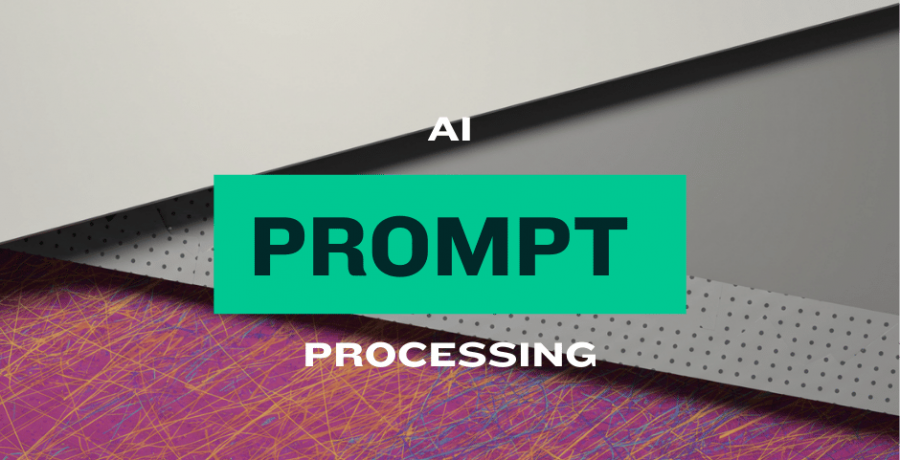Chain Prompting for Multi-Step AI Tasks
Imagine building a house without blueprints. You might start with the roof, forget the foundation, and end up with a lopsided structure. Similarly, asking AI to tackle complex tasks in a single prompt often leads to chaotic or incomplete results. Enter chain prompting: a methodical approach to breaking down intricate projects into sequential, manageable steps. Whether you’re writing a novel, analyzing data, or coding an app, this technique transforms overwhelming tasks into streamlined workflows. Here’s how to harness its power.
What Is Chain Prompting?
Chain prompting involves dividing a complex task into a series of interconnected prompts, where each step builds on the previous one. Instead of asking AI to “write a research paper” (a recipe for vagueness), you guide it through stages: “Outline key arguments” → “Draft the introduction” → “Add supporting data” → “Revise for clarity.”
Why it works:
-
AI performs better with focused, bite-sized tasks.
-
Intermediate outputs provide context for subsequent steps.
-
Errors are easier to spot and correct early.
Example:
Task: Write a blog post about climate change.
Chain:
“Generate 5 headlines highlighting recent climate policies.”
“Create an outline using the headline ‘The Rise of Carbon-Neutral Cities.’”
“Draft an introduction with statistics from 2023.”
“Expand section 3 to include case studies.”
Why Chain Prompting Matters
-
Handles Complexity:
Tasks like coding a full-stack app or analyzing large datasets are too layered for single prompts. Chains isolate subtasks, reducing cognitive overload.-
Example: Building a weather app:
-
Step 1: Design the user interface.
-
Step 2: Code the API integration.
-
Step 3: Add error handling for invalid locations.
-
-
-
Improves Quality:
Focusing on one component at a time minimizes errors. A study outline ensures the final paper stays on topic; debugging code step-by-step prevents cascading failures. -
Enables Flexibility:
Adjust prompts mid-process based on intermediate results. If the AI generates a bland character for your story, refine the next prompt: “Make the protagonist more sarcastic.”
How to Design Effective Prompt Chains
1. Break Down the Task
Identify logical subtasks, prioritizing dependencies. For instance, you can’t draft a novel’s climax without first defining the protagonist’s motivations.
Example: Writing a Marketing Plan
-
Prompt 1: “List 5 target demographics for eco-friendly sneakers.”
-
Prompt 2: “Create a SWOT analysis for Demographic A (ages 18–24).”
-
Prompt 3: “Draft a TikTok ad script targeting Demographic A.”
2. Order Prompts Strategically
Ensure earlier outputs inform later steps. For coding, structure prompts to mirror development stages:
-
“Write Python code to scrape a website.”
-
“Add a function to export data to CSV.”
-
“Optimize the code for speed.”
3. Iterate and Refine
Use feedback loops to tweak outputs. If the AI generates a vague data visualization, follow up with:
“Recreate the chart using a logarithmic scale and label outliers.”
Real-World Examples
1. Creative Writing: Crafting a Fantasy Story
-
Step 1: “Generate 3 magical creature concepts with unique abilities.”
→ Output: “Phoenix wolves (fire healers), Tide serpents (water manipulators), Shadow wisps (memory thieves).” -
Step 2: “Create a conflict between Phoenix wolves and Shadow wisps over a sacred forest.”
-
Step 3: “Write a dialogue scene where a Tide serpent mediates the conflict.”
2. Data Analysis: Sales Report
-
Step 1: “Clean this dataset by removing null values and formatting dates.”
-
Step 2: “Identify the top 3 products by Q4 revenue.”
-
Step 3: “Create a line graph comparing monthly sales trends.”
3. Software Development: To-Do List App
-
Step 1: “Write HTML/CSS for a minimalist to-do list interface.”
-
Step 2: “Add JavaScript functions to add and delete tasks.”
-
Step 3: “Integrate Firebase to save tasks to a database.”
Common Mistakes to Avoid
-
Overcomplicating Chains:
Too many steps confuse the AI. Start with 3–5 critical phases.-
Bad: Splitting “Write a poem” into 10 prompts for each stanza.
-
Better: “Choose a theme” → “Define rhyme scheme” → “Draft the poem.”
-
-
Poor Prompt Order:
Designing a book cover before finalizing the title wastes effort. Always sequence tasks logically. -
Skipping Iteration:
Chains aren’t set in stone. Revise prompts if outputs miss the mark.-
Example: After generating a generic logo, refine with: “Make the logo more retro and use muted colors.”
-
Tools for Chain Prompting
-
OpenAI’s ChatGPT: Use conversational chains (e.g., “Based on the previous code, add comments explaining each function”).
-
LangChain: A Python library for orchestrating multi-step AI workflows, like chaining a summarizer and translator.
-
Zapier: Automate chains across apps (e.g., generate blog ideas in ChatGPT → publish to WordPress).
-
Deepseek: A specialized AI platform designed for multi-step workflows, offering robust context retention and task-specific optimization. It excels in technical, analytical, and creative chains.
-
Example:
-
“Analyze GitHub repositories to identify trending Python libraries in 2024.”
-
“Summarize the use cases for the top 3 libraries.”
-
“Draft a tutorial outline for implementing [Library X] in data pipelines.”
-
-
Why it works: Deepseek r1 maintains context across prompts, allowing iterative refinement (e.g., adding code snippets to the tutorial after outlining).
-
The Future of Chain Prompting
-
Auto-Chaining AI: Models that decompose tasks automatically (e.g., “Plan a conference” → generates prompts for venues, schedules, and invites).
-
Collaborative Chains: Teams co-building prompts in shared platforms, merging expertise.
-
Context-Aware AI: Models that retain context across chains, like remembering a character’s backstory throughout a novel.
Conclusion
Chain prompting turns daunting projects into achievable milestones. By guiding AI through deliberate, interconnected steps, you gain precision, creativity, and control. Start small—chain two prompts for your next task—and scale as you master the rhythm.
Pro Tip: Document successful chains as templates for future projects. For instance, save your “Data Analysis Chain” (clean → analyze → visualize) for repeat use.
Now go build, create, and iterate—one prompt at a time. 🛠️






Comments (0)